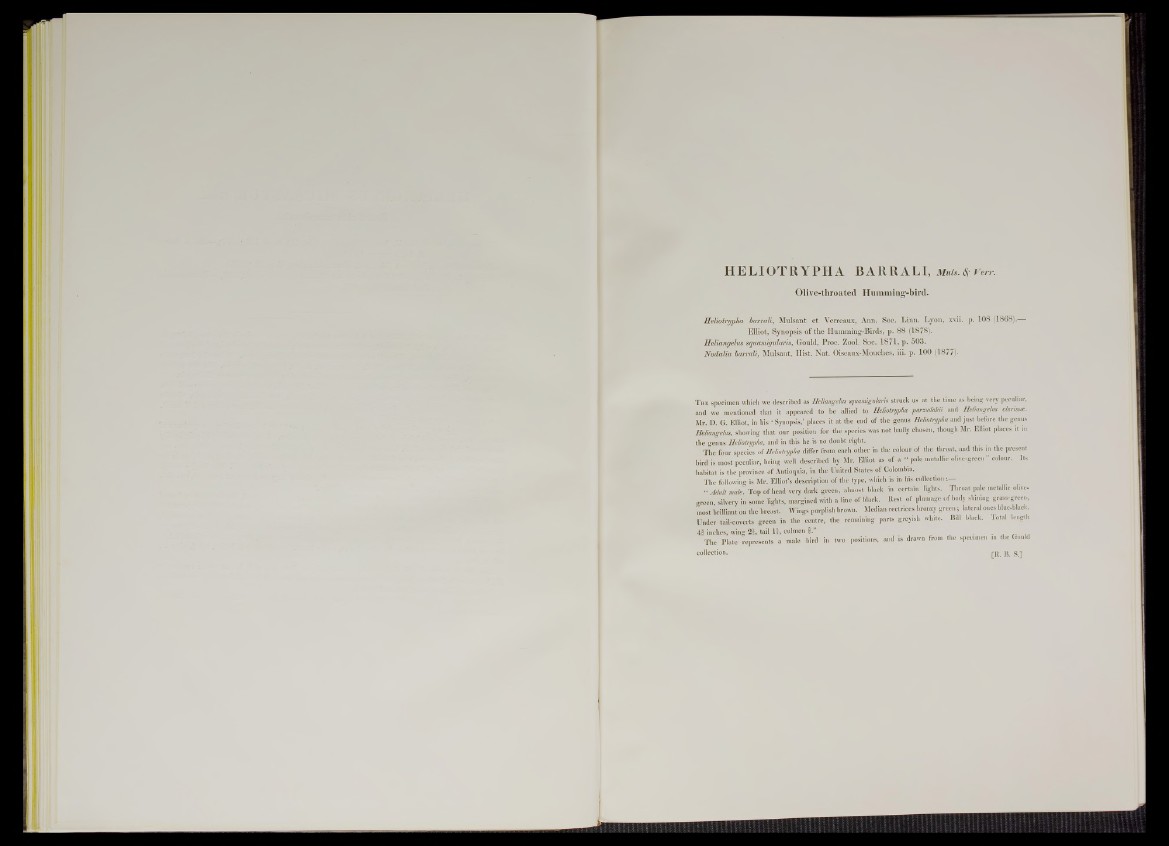
HELIOTRYPHA BARRALI, Muis.SfVerr.
Olive-throated Humming-bird.
Heliotrypha barrali, Mulsant e t Verreaux, Ann. Soc. Linu. Lyon, xvii. p. 1 0 8 (1868) .-H
Elliot, Synopsis o f the Humming-Birds, p. 8 8 (1878).
Heliangelus squamigularis, Gould, Proc. Zool. Soc. 1 871, p. 503.
N o d a lia barrali, Mulsant, Hist. Nat. Oiseaux-Mouches, iii. p. 10 0 (1877).
T he specimen which we described as Heliangelus squamigularis struck us at the time as being very peculiar,
and we mentioned that it appeared to he allied to Heliotrypha parzudakii and Heliangelus Clarissas.
Mr. D. G. Elliot, in his ‘ Synopsis,’ places it at the end of the genus Heliotrypha and just before the genus
Heliangelus, showing that our position for the species was not badly chosen, though Mr. Elliot places it in
the genus Hehotrypha, and in this he is no doubt right.
The four species o f Heliotrypha differ from each other in the colour of the throat, and this in tile present
bird is most peculiar, being well described by Mr. Elliot as of a ■■ pale metallic olive-green ” colour. Its
habitat is the province of Antioquia, in the United States of Colombia.
The following is Mr. Elliot’s description of the type, which is in his collection B
“ Adult male. Top of head very dark green, almost black in certain lights. Throat pale metallic olive-
green, silvery in some lights, margined with a line of black. Rest of plumage of body shining grass-green,
most brilliant on the breast. Wings purplish brown. Median rectrices bronzy green; lateral ones bine-black
Under tail-coverts green in the centre, the remaining parts greyish white. Bill black. Total length
41 inches, wing 2 1, tail 1 1 , cnlmcn 1 .” I
The Plate represents a male bird in two positions, and is drawn from the specimen m the Gould
collection. j-jj g g j